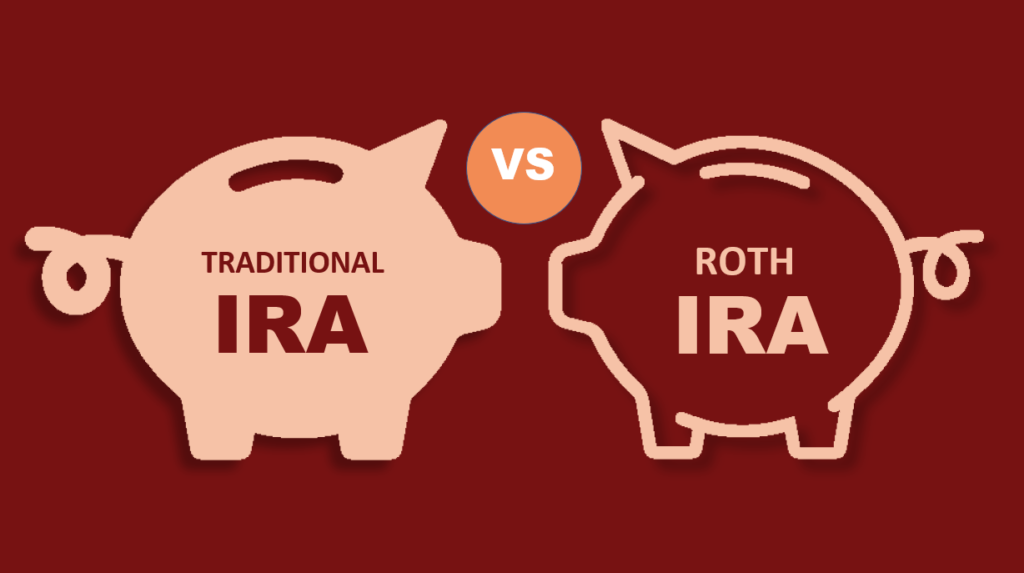
Tax and Accounting Services
About DuPage Tax Solutions
DuPage Tax Solutions is located in Naperville, IL. Our clients are mostly residents and small businesses within the Chicago metropolitan area – DuPage, Cook, Will, and Lake counties. Our remote work capabilities allowed us to extend our services nationwide. Today, we pride ourselves in having clients from all 50 states. Our virtual services are fast, easy, and convenient. Clients submit and review documents electronically through our secured online portal.
IRA Plans: Traditional IRA vs. Roth IRA

Traditional and Roth IRA accounts are essential tools for securing retirement funds. While they share some similarities, they also have distinct differences, particularly regarding contribution and distribution rules. The best choice for you will depend on your specific tax situation.
Home » IRA Plans: Traditional IRA vs. Roth IRA
Common Features of IRA Accounts
Tax-Free Growth
One of the significant advantages of both IRA types is that earnings grow tax-free until withdrawal. You can accumulate retirement savings without worrying about owing taxes on them.
Taxable Compensation Requirement
To contribute, you must have taxable compensation, which can include wages, salary, tips, commissions, bonuses, professional fees, or net earnings from self-employment. Alimony and child support also qualify. If you’re married, you can open a spousal IRA if one spouse has taxable compensation, allowing both spouses to contribute.
IRA Plans Contribution limits
For 2024, contribution limits are the lower of $7,000 ($8,000 if you’re 50 or older) or your taxable compensation. This limit does not apply to rollover contributions or qualified reservist repayments. Be aware that contributing more than the limit could trigger a 6% penalty on the excess contribution. To avoid this penalty, you must withdraw the excess contributions and any income earned on the excess contribution by the due date of your individual tax return (including extensions).
IMPORTANT: If you have multiple IRAs, your total contributions across all accounts cannot exceed $7,000 ($8,000 if 50 or older).
Example:
If you’re 35 years old and have two Traditional IRAs, you can contribute $3,500 to each account (totaling $7,000). If you’re 50 or older, you can contribute $4,000 to each account (totaling $8,000).
Contribution deadlineS for IRA Accounts
The deadline for making contributions is the tax filing due date, April 15 (not including extensions).
10% penalty for early withdrawals
The IRS charges a 10% penalty for withdrawing before age 59.5 unless an exception applies to you. Visit the IRS website for the list of exceptions.

Key Differences Between IRA Accounts
deductibility of IRA Plan contributions
Contributions to Traditional IRAs are typically tax-deductible, while Roth contributions are not. Traditional IRA deductions may be limited if you or your spouse participates in a workplace retirement plan. Check the IRS website to see if you qualify for a full, partial, or no deduction.
Taxability of distributions
Distributions from Traditional IRAs are generally taxable at your current tax rate. With Roth IRAs, withdrawals of contributions are tax-free and penalty-free at any age. However, earnings from a Roth IRA are without penalty or tax if you are at least 59.5 years old and meet the five-year rule (the account must be open for at least five years). If you withdraw earnings before age 59.5 and don’t meet the five-year rule, the earnings may be subject to taxes and penalties. You can check the IRS list of exceptions to penalties to see if you can avoid penalties for early withdrawals.
Required minimum distributions from IRA Accounts
Traditional IRAs require RMDs, which must begin by April 1 following the year you turn 73 if you reach 72 after December 31, 2022. Subsequent RMDs must be taken by December 31. Roth IRAs do not require RMDs if you are the original owner.
Income limits for roth ira Plan contributions
Modified adjusted gross income (MAGI) thresholds apply for Roth contributions. For 2024, you cannot contribute to a Roth IRA if you are the following filing status and have the following MAGI:
a. Married filing jointly: > $240,000
b. Single, head of household, married filing separately: > $161,000
For more information on the amount of Roth IRA contributions you can make for 2024 based on your income, visit the IRS website.
Considerations when selecting an ira Plan
Generally, a Roth IRA may be more advantageous if you anticipate being in a higher tax bracket in retirement. You can pay lower taxes now and enjoy tax-free distributions later. Conversely, if you expect to be in a lower tax bracket during retirement, a Traditional IRA could be beneficial by allowing you to pay less tax on distributions than you would now.
If you don’t meet the income thresholds for a Roth IRA, consider a backdoor Roth IRA as an option. Learn more about backdoor Roth IRAs.
Amount of Roth IRA Contributions That You Can Make for 2024. Internal Revenue Service, www.irs.gov/retirement-plans/plan-participant-employee/amount-of-roth-ira-contributions-that-you-can-make-for-2024
2024 IRA Contribution and Deduction Limits Effect of Modified AGI on Deductible Contributions If You Are Covered by a Retirement Plan at Work. Internal Revenue Service, www.irs.gov/retirement-plans/plan-participant-employee/2024-ira-contribution-and-deduction-limits-effect-of-modified-agi-on-deductible-contributions-if-you-are-covered-by-a-retirement-plan-at-work.
You May Also Like These


How Seniors Can Reduce Their Taxes

Retirement Plans for Business Owners

Qualified Charitable Distributions
Ready to Take Control of Your Finances?
Contact us today for personalized tax, accounting, and advisory services tailored to your needs. Let’s work together to achieve your financial goals!

Contact Info
Ph. (630) 909 9700
Email: DPTax@DP-Tax.com
Mail address:
1552 Illinois Rte 59 #1037
Naperville, IL 60564
Business Hours
Mon: 11 am – 7 pm
Tue: 11 am – 7 pm
Wed: 11 am – 7 pm
Thu: 11 am – 7 pm
Fri: 11 am – 7 pm
Sat: 12 pm – 5 pm
Sun: CLOSED
Helpful Links
© 2024 DuPage Tax Solutions | Site Map | Privacy Policy | Disclaimer
